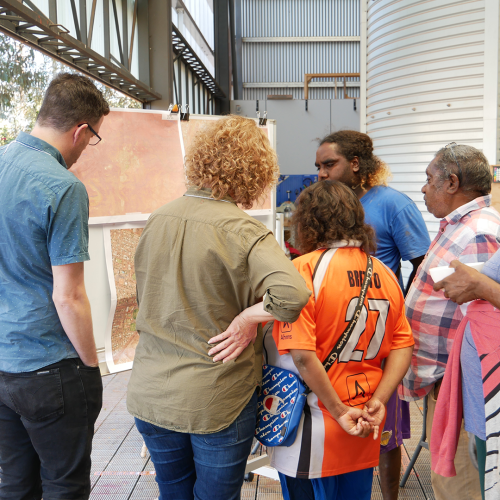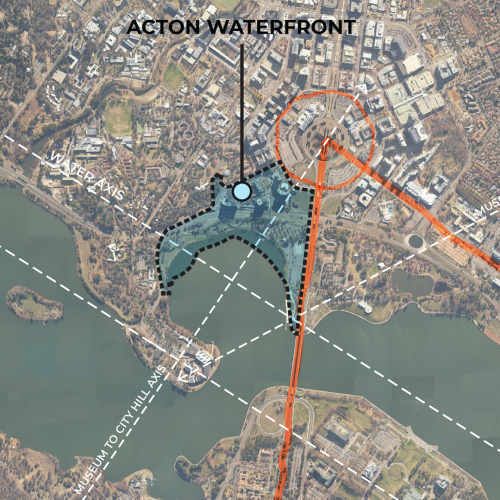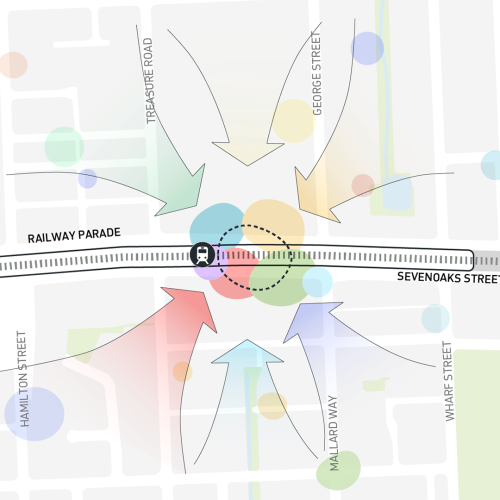Subiaco Square
- Client:
- Subiaco Square Joint Venture
- Location:
- Subiaco, Western Australia
- Features:
- Transit orientated design, activity centre master plan; Site responsive design; Activation and vibrancy; Urban design and architecture
- Awards:
-
UDIAWA. Medium/High Density Residential Development - 2003
Hames Sharley completed feasibility studies, town planning, urban design, architecture and landscape architecture for this ambitious inner-city project. Located on the axis of Rokeby Road, Subiaco ‘s main street, the project comprises a mixed-use development of 300 apartments, a retail laneway including a supermarket, restaurants and cafes, underground car park and commercial offices around a civic square accessing an underground commuter train station.
The square, which is a focal point for the local community as well as tourists and spectators at the nearby Subiaco Football Oval is enclosed by medium-rise apartment buildings with cafes, restaurants and shops activating the square at ground level. The square is now also used for events and markets and has become a vibrant meeting place for both workers and residents. Key to the success of the project was Hames Sharley’s approach to ensuring that the retail element was designed with flexibility to ensure operational and servicing efficiencies. Hames Sharley worked closely with the developers of the residential apartments to ensure their market appeal as they represented an untested typology for the Subiaco area at the time.
This important piece of inner city land was developed to its optimum within strict design guidelines through the co-operation of a number of landowners, transit authorities and the City of Subiaco, and included innovative tenure arrangements such as air and subterranean rights. The integration of the transport interchange with the residential and commercial development resulted in an excellent example of a public/private partnership arrangement.







